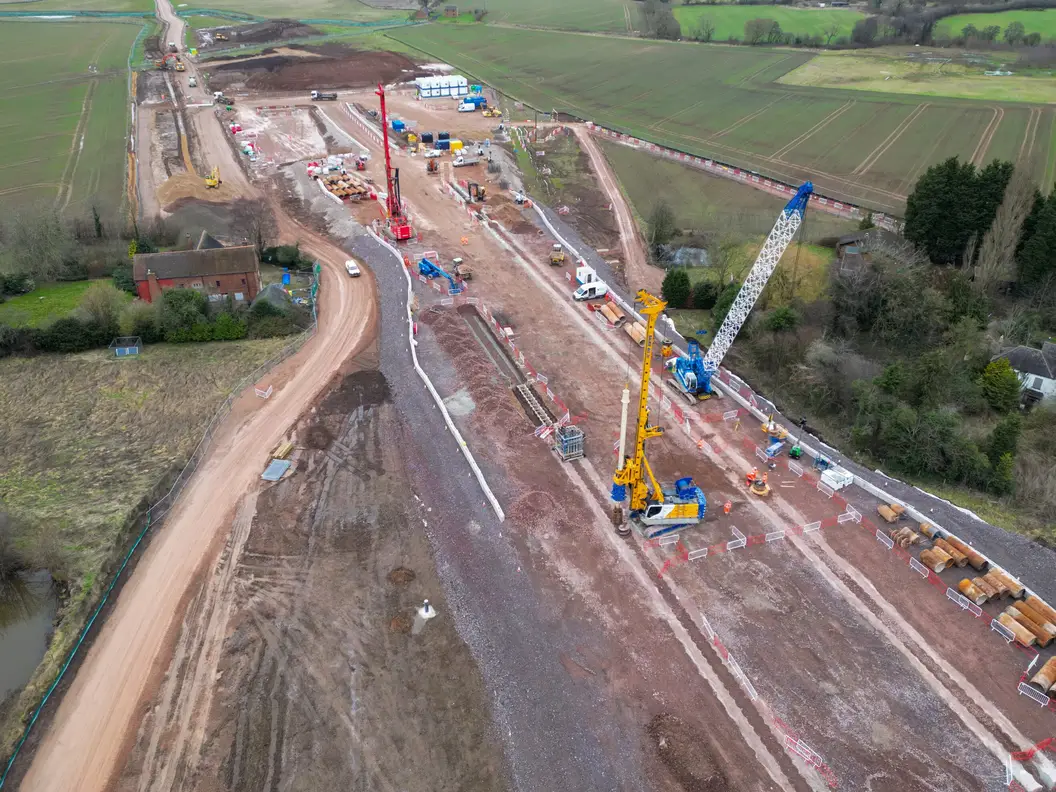Lessons from HS2: What Major Programs Must Learn Before It’s Too Late
Digital Strategy and Transformation Partner

Lessons from HS2: What Major Programs Must Learn Before It’s Too Late

In June 2025, the UK Government released the Stewart Review into the governance and assurance of High Speed 2 (HS2), one of the country’s most ambitious and controversial infrastructure programs.
The findings were sobering: blurred accountability, unstable scope, chronic cost uncertainty, and fractured relationships across delivery and oversight bodies.
This article distills the key lessons from that review into practical, actionable insights for public and private organisations tackling complex digital and infrastructure programs.
1. Clarity and Stability of Scope Cannot Be Optional
“The fundamental tenet of a successful project is the clarity and stability of requirements and scope, and this has rarely been the case for HS2.”
Across sectors, we see programs launched with high-level ambitions but without stable, agreed-upon scope. The result: endless cycles of replanning, reapproval, and reduced confidence.
What to Do:
- Establish a fixed and endorsed program baseline before major procurement or delivery phases begin.
- Design governance mechanisms that allow scope change only with deliberate trade-off decisions across cost, schedule, and benefits.
- Build shared understanding of scope boundaries and exclusions early and maintain it continuously.
2. Governance Is Not Just Structure; It’s Trust, Behaviour, and Timing
“There is insufficient shared ownership of problems between organisations and no governance forum to collaborate and jointly solve problems.”
The Stewart Review found that governance forums had become performance monitoring exercises, not venues for collaborative problem solving. Too often, structures were layered, slow, and lacked the teeth to resolve cross-cutting issues.
What to Do:
- Design governance layers with a clear purpose: decision-making, accountability, collaboration, or assurance.
- Introduce mixed forums where sponsor, delivery, and shareholder representatives can jointly navigate issues.
- Rotate governance roles as program phases shift from design to delivery to operations.
3. Political and Strategic Decisions Must Be Buffered from Delivery
“HS2 had no buffer to evolving political aims, which pushed forward before there was sufficient design maturity.”
This lesson applies far beyond politics. Wherever high-level stakeholders intervene in delivery decisions, programs need structured mechanisms to absorb and manage that input - without triggering churn.
What to Do:
- Create translation layers between strategic objectives and delivery design - ideally through an empowered sponsor role.
- Time key policy or shareholder decisions to program lifecycle points where changes can be absorbed.
- Maintain a current, transparent design maturity index to inform readiness for major decisions.
4. Cost Culture Must Be Constructive, Not Cosmetic
“A top-down vision to build the best and fastest railway in the world undermined efforts to introduce a culture of cost control.”
The push for excellence often becomes a justification for uncontrolled costs. The result isn’t excellence, but erosion of stakeholder trust and increased scrutiny.
What to Do:
- Normalise cost consciousness across all teams, not just finance or commercial functions.
- Conduct design-to-cost reviews as a routine step, not a defensive one.
- Recast affordability as a driver of innovation and simplification.
5. Contracting Approaches Must Reflect Delivery Maturity
“Stage 2 MWCC contracts were let before sufficient design maturity. The result was persistent cost overruns.”
Procurement and contracting often outpace design and interface maturity. This disconnect leads to adversarial contracts and underperformance that no delivery team can recover from alone.
What to Do:
- Stage contracts to align with program design readiness; avoid locking in too early.
- Use early market engagement to shape commercial approaches based on delivery constraints.
- Enable flexible commercial models that allow rebaseline without renegotiation.
6. Capability Isn’t a Headcount Problem - It’s About Fit for Phase
“The lean client model proved to be the wrong model as HS2 moved into delivery. Capability shortfalls were evident at both HS2 Ltd and DfT.”
Many programs assume that lean is efficient. But complexity and scale demand a delivery organisation with the right blend of strategic oversight, technical depth, and operational responsiveness.
What to Do:
- Assess capability needs at every phase transition: concept, design, procurement, integration, and operations.
- Maintain agility in resourcing models; blend internal staff, secondees, and external partners.
- Design governance forums with people who have lived delivery experience - not just policy or assurance roles.
7. Trust Is a Deliverable, Not a By-product
“Significant cost overruns led to breakdowns in trust, and that breakdown has undermined future delivery.”
When trust erodes, so does delivery performance. Escalations become adversarial, governance becomes defensive, and talented people exit.
What to Do:
- Share data transparently, even when it’s uncomfortable.
- Frame early warning signs as learning opportunities, not performance failures.
- Design escalation pathways that are collaborative, not punitive.
8. Delivery Confidence Requires Integrated Assurance That Adds Value
“There was a multiplicity of external reviews with overlapping scopes and no central coordination.”
Too often, assurance is backward-looking, compliance-driven, and duplicative. The Stewart Review calls for a reinstated Integrated Assurance Group with a wider mandate.
What to Do:
- Use a single integrated assurance plan across all parties: delivery, sponsor, and shareholder.
- Link assurance themes to current delivery risks, not standard checklists.
- Coordinate reviews to avoid assurance fatigue and maintain a forward-looking posture.
Final Word: Reform Is Not a One-Off - It’s a Mindset
The HS2 experience underscores how even the best-funded programs can underperform when clarity, trust, capability, and accountability are absent.
At Geode, we don’t believe in perfection. We believe in learning, adapting, and delivering through complexity. These lessons from HS2 are a reminder that transformation starts not with technology or funding, but with the discipline to confront what’s not working and the courage to change it.
Looking to apply these insights in your own environment? Let's talk.

Digital Strategy and Transformation Partner
Geode Solutions helps organizations design, fund, and deliver complex digital transformation initiatives. Our work spans strategy, architecture, procurement, delivery, and advisory services across Australia.
